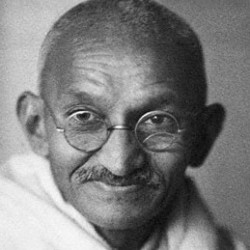
Mumbai, October 2: For nearly two years after India became independent, pictures of the king and queen of Britain continued to adorn government offices and departments.
It was only from June 2, 1949 that the government of then Bombay state ordered all offices to replace the photographs of British colonial rulers with those of Mahatma Gandhi, who by then had been assassinated.
In keeping with the principles of austerity practiced by the Mahatma, old frames from the British photos were used to mount pictures of the Father of the Nation, according to archival material released by Raj Bhavan here Monday, the eve of Gandhi Jayanti.
"The photographs of their majesties ... should be carried to a remote place where the frame and glasses should be removed.
The frames and glasses which remain intact and neat and tidy should be used for framing Mahatma Gandhi's photographs," says the government resolution issued by the Political and Services Department of the government of Bombay.
The government record (GR) copies, issued by then chief secretary M.D. Bhat, were marked to the governor, premier of Bombay, the High Court, divisional commissioners, heads of government departments, ministers, collectors and chief administrators of Kolhapur and Sangli and special commissioner of Baroda.
"It is apparent from the GR and circular that the government advocated austerity while asking government departments to re-use the old photo frames in tune with the ideology of the new entrant to the photo frame, Mahatma Gandhi," a Raj Bhavan official said.
The resolution further said: "The actual material on which the photographs or portraits of the king and queen are photographed or portrayed should be stored in a safe place where there is no inflammable material nearby.
The question as to what should be done with the photographs without frames will be decided after three years."
The GR also specified the kinds of pictures the government had approved for use in various offices.
It had approved pictures received from three agencies - Rex Photo Studio, Bombay, bust size 16 inches by 22 inches; Vanguard Studio, Bombay, size 14 inches by 17 inches; Dandi Kuch upright position, and Associated Photo Service, Delhi, bust size with folded hands size 10 inches by 12 inches.
The interesting aspect was that the GR also specified which government office should use which particular photograph of Mahatma Gandhi.
Later, in another GR issued on Oct 14, 1949, the prices for the three types of pictures were also communicated.
The first one, without frame, was fixed at Rs.30, the second one at Rs.18 and the third at Rs.8 per copy.
Today, no government office in the country is complete without a photograph of Mahatma Gandhi, displayed in a prominent location in its premises.





Comments
Add new comment